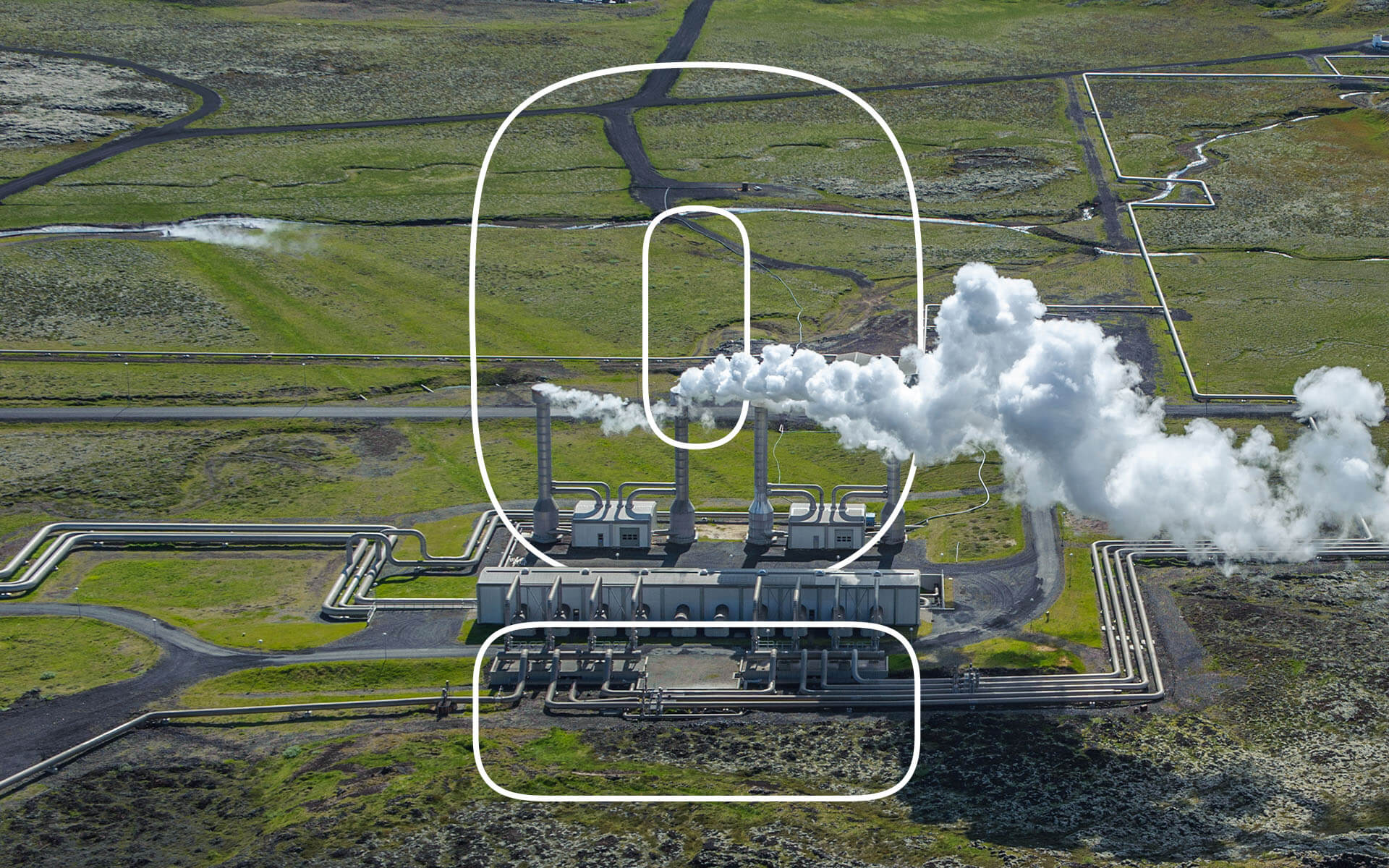
Geothermal Energy for Homes: Everything You Need to Know
We are reader-supported. When you buy through links on our site, we may earn affiliate commission.
You use more than half of your energy consumption for heating and cooling your home. Most of the power comes from electricity which is often created by fossil fuels. These fossil fuels, like coal or natural gas, are nonrenewable sources. Geothermal energy for homes helps mitigate fossil fuel usage.
Plus, they increase air pollution and contribute to climate change. However, geothermal energy comes from the earth. So, here is everything you need to know about geothermal energy for homes.
How Does It Work
Thermic energy works by using heat close to the earth’s surface. The system pumps water or refrigerant through the pipes below ground. The temperature is constant at about 50℉ to 60℉. During the winter, the water absorbs the warmth, to heat your house. The process is then reversed in the summer.
Here are the steps the system goes through:
1. Water passes through a loop of pipes.
2. When it is cold, the water warms up as it travels underground.
3. Once above ground, the heat is transferred to your house.
4. After the building is heated the water cools down and is pumped back underground. Then the cycle starts again.
5. On a summer day, the water cools the building and then is pumped underground. The heat then goes to the pipes.
The Pros of Using Geothermal Energy
Geothermal energy is an eco-friendly source of power for your residence. Here are a few more advantages of geothermal energy for homes.
1. It’s a Reliable Source of Energy
Geothermal pumps can run anytime since their fuel source is constant. The earth’s internal temperature remains the same and is a renewable source. Unlike solar or wind it doesn’t rely on outside factors to run. Plus, geothermal sources are more flexible. It’s easier to increase or decrease heat production depending on your needs.
2. It Reduces Carbon Emissions
Thermal power releases less greenhouse gas emissions than traditional fuel sources. Geothermal power plants produce about 5.7 g of carbon dioxide. Lowering emissions is critical in minimizing the impacts of global warming. As earth temperature rises, more severe storms occur and wildlife habitats are disrupted.
3. Reduce the Reliance on Fossil Fuels
Many industrial processes, such as manufacturing textiles, rely on fossil fuels. They need the energy to assemble products and heat the buildings. In 2015, about 30% of all energy used by the industrial sector was natural gas. So, switching to non-solar energy reduces the number of fossil fuels consumed.
4. It Lasts Longer
Geothermal heat pumps have a long life expectancy of about 15 years. This saves costs and reduces the need for consistent repairs. However, to keep your system running longer, complete regular maintenance. Start by changing your filter every month and cleaning the fan. Also, have a professional inspect your unit.
Here are a few tasks they can perform:
- Check the ducts, filter, and blower
- Identify and seal duct leakage
- Confirm adequate airflow
- Inspect the electrical terminal and tighten connections
The Drawbacks of Using Geothermal Energy
Despite the efficiency and environmental impacts, thermic energy has some disadvantages. Here are a few things to consider before using geothermal energy for homes.
1. There Are Location Restrictions
Geothermal energy does require certain conditions. For example, it relies on areas where hydrothermal resources are available. Many of these sites have been identified in the western United States. With this lack of access, it’s harder to provide geothermal energy to all homes. Other considerations include the earth’s temperature and rock type. You need to find temperatures that produce steam and stones you can easily drill through.
2. There Are Earthquake Risks
These systems do risk causing minor earthquakes. This is because water is drilled into a well at a high-pressure level. South Korea experienced an earthquake when developing its geothermal system. To prevent this risk, it’s important to develop strict operation guidelines.
3. It Can Be Expensive
These systems can cost about $2500 per installed kW. In addition, other energy sources, such as solar, receive financial incentives. Yet, for heat energy, there aren’t as many available. Plus, solar offers lower project risks. These factors can raise the price of geothermal energy. Although, in the long run, it’s sustainable and requires less maintenance.
4. There Are Some Workplace Hazards
Working with these systems comes with certain risks. For example, employees are exposed to dust and very hot steam. This could lead to repository issues or potential burns. Although, taking proper safety precautions can minimize these risks.
How to Use Geothermal Energy in Your Home
Thermal power is mainly used to heat and cool houses or as hot water. It can function as your furnace, air conditioner, or water heater. Plus, with its energy efficiency, you can save money on your utility bills. For example, ground pumps use about 75% less energy than traditional heating sources. You can even use thermic power to warm up a pool.
In addition, power plants can use it to generate electricity. We use this to charge our electronics and appliances.
Why Use Geothermal Energy for Homes
Geothermal energy is a renewable source that can limit our reliance on fossil fuels. We rely on these fuels to heat our homes and provide electricity. Yet, they can harm the environment. That’s why it might be time to use geothermal energy for homes. Just keep in mind factors, such as location and price.
Share on
Like what you read? Join other Environment.co readers!
Get the latest updates on our planet by subscribing to the Environment.co newsletter!
About the author

Jane Marsh
Starting from an early age, Jane Marsh loved all animals and became a budding environmentalist. Now, Jane works as the Editor-in-Chief of Environment.co where she covers topics related to climate policy, renewable energy, the food industry, and more.





